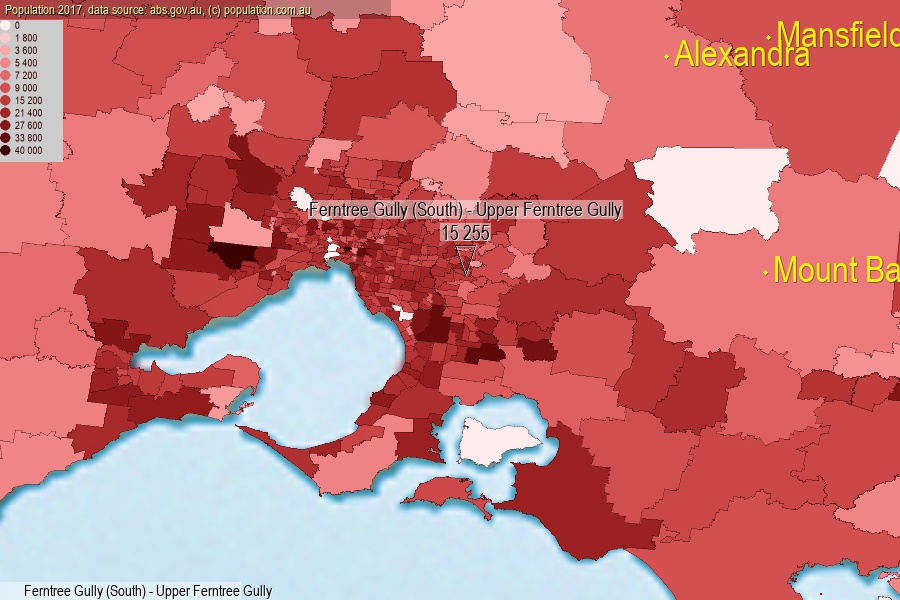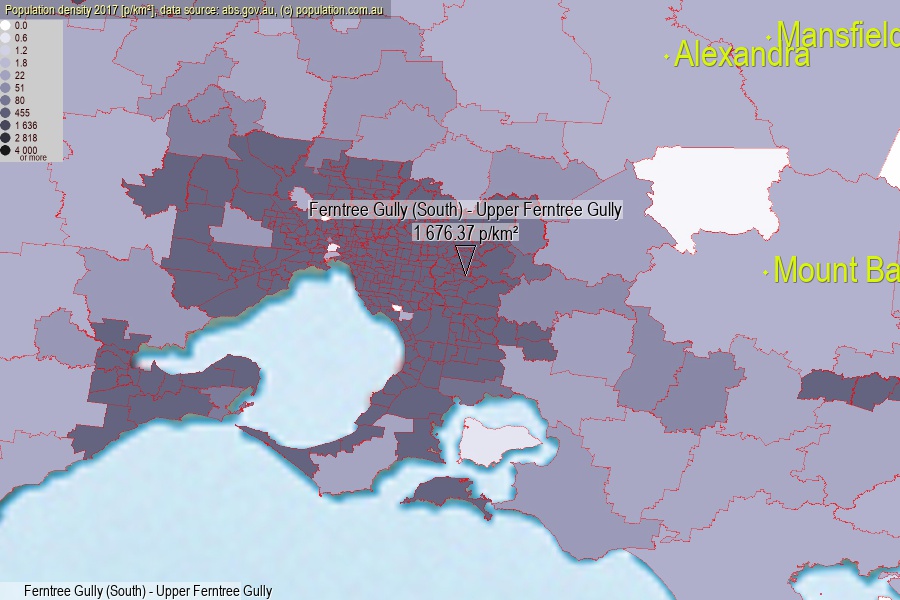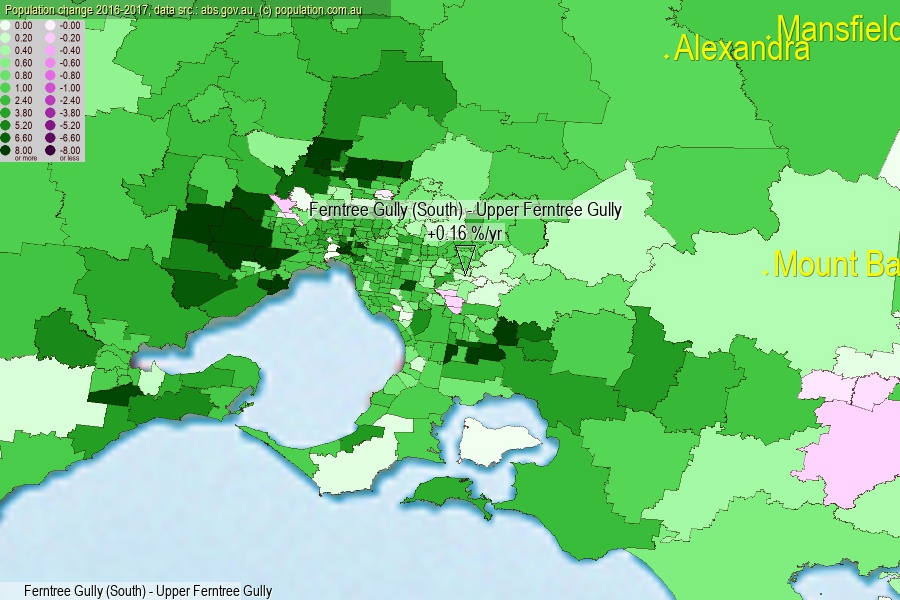 population.com.au
population.com.auLast official estimated population of Ferntree Gully (South) - Upper Ferntree Gully (as Statistical Area Level 2) was 15 255 people (on 2017-06-30)[2]. This was 0.06% of total Australian population and 0.237% of VIC population. Area of Ferntree Gully (South) - Upper Ferntree Gully is 9.10 km², in this year population density was 1 676.37 p/km² . If population growth rate would be same as in period 2016-2017 (+0.16%/yr), Ferntree Gully (South) - Upper Ferntree Gully population in 2025 would be 15 456. [0]



Click to enlarge. Ferntree Gully (South) - Upper Ferntree Gully is located in the center of the images.
Population [people], population density [p./km²] and population change [%/year] [2]
View borders » (new window) [4]
[2001-2002] -0.75 %/Yr.
[2002-2003] -0.59 %/Yr.
[2003-2004] -0.99 %/Yr.
[2004-2005] -0.53 %/Yr.
[2005-2006] +0.63 %/Yr.
[2006-2007] +1.29 %/Yr.
[2007-2008] +1.16 %/Yr.
[2008-2009] +1.26 %/Yr.
[2009-2010] -0.16 %/Yr.
[2010-2011] -0.29 %/Yr.
[2011-2012] +0.10 %/Yr.
[2012-2013] +0.15 %/Yr.
[2013-2014] +0.06 %/Yr.
[2014-2015] +0.09 %/Yr.
[2015-2016] +0.25 %/Yr.
[2016-2017] +0.16 %/Yr.
[0] Calculated with linear interpolation from officially estimated population
[1] Read more about SA2 and Australian Statistical Geography Standard (ASGS) on abs.gov.au
[2] Population data from Australian Bureau of Statistics (Population and density: 2017; change: 2016-2017)
[3] Digital Boundaries: Australian Statistical Geography Standard (ASGS) 2016.
[4] Border coordinates are simplifyed using Ramer-Douglas-Peucker algorithm.